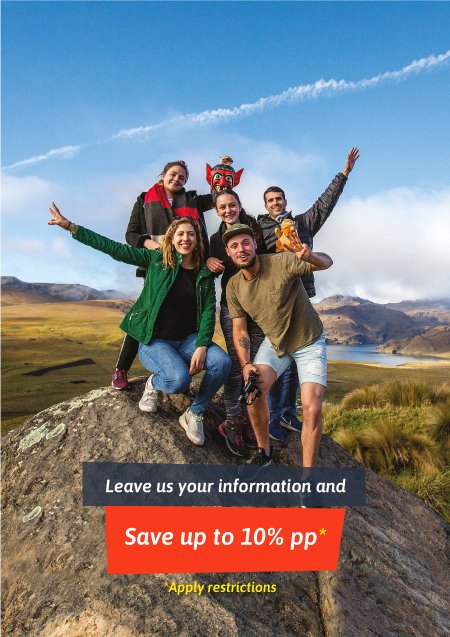Hiking the Inca Trail in Ecuador is an experience which should inspire excitement, invoke a little bit of nervousness, stoke jealousy amongst your close ones, and stir a sense of wonder in your heart and soul.
Alright, now that you have decided to adventure yourself in the Inca Trail in Ecuador, this post will come in handy providing you all the essential information to plan and prepare for the journey.
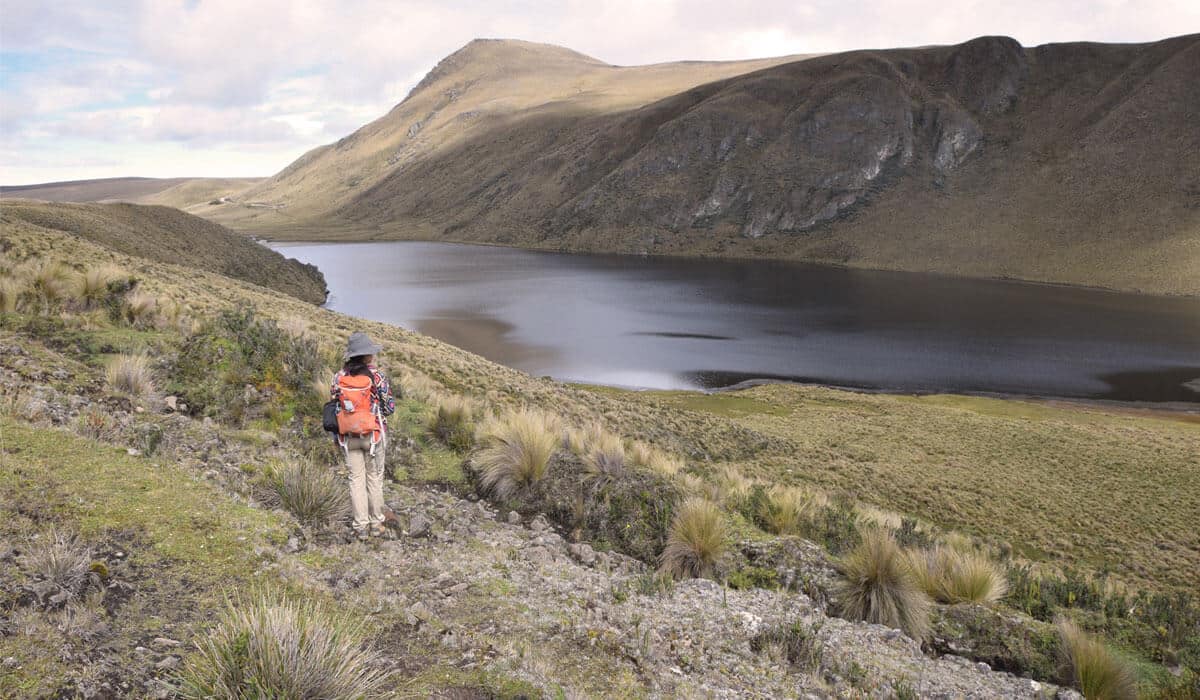
Once you discover that Ecuador posses a bit of the world’s most famous hike, the Inca Trail, it needs to be schedule in your busy agenda. The hike itself, which brings you along ancient narrow paths high into the Ecuadorian Andean mountains, is gorgeous; astonishing Incan ruins, amazing lagoons, and majestic valley views laid out along the way to a greatest end-point of many multi-day hikes, the iconic Ingapirca archeological complex.
After our own hike experience, we wanted to share some insights, advice, and tips to help you plan and prepare for your own successful Qhapaq Ñan journey – all summarized down into this guide.
So, whether you’re going there in high or low season and want to understand the camping and accommodation situation better, have no idea what to pack or whether you need a permit, worrying about your fitness level, will get altitude sickness or if it’s too late to book a spot on a tour, then this post will provide you with all the necessary information answers. Hopefully these words can pass on quite a bit of excitement and inspiration for the hike itself!
Ready? Here’s all you need to know before embracing the Inca Trail in Ecuador or Qhapaq Ñan hike.
Everything you need to know before hiking The Inca Trail
The Inca Trail in Ecuador is a remarkable 3-day, 2-night hike which leads explorers from Achupallas (the starting is point 30 minutes outside this town) all the way to Ingapirca passing alongside the beautiful Tres Cruces lagoon and the mystical Culebrillas Lagoon. Some well-prepared explorers may decide to hike the journey in only 2 days and 1 night, but they need to walk at a much faster pace.
The most common itinerary is as follows; day 1 you will start your journey at Achupallas and walk all the way to Tres Cruces Lagoon, around 5 hours hike, where you will set up first camp and stay overnight. Day 2 will take you downhill the Yanahurco Hill to the historical site of Paredones; camp will be set up at this magical place charge with a vibrant atmosphere. At night if you are lucky and have a clear sky you will be able to device the snake shape path inside the lagoon. The final day you have a 5 hour walk to the iconic Ingapirca where you must visit the complex and explore the ancient Inca establishment.
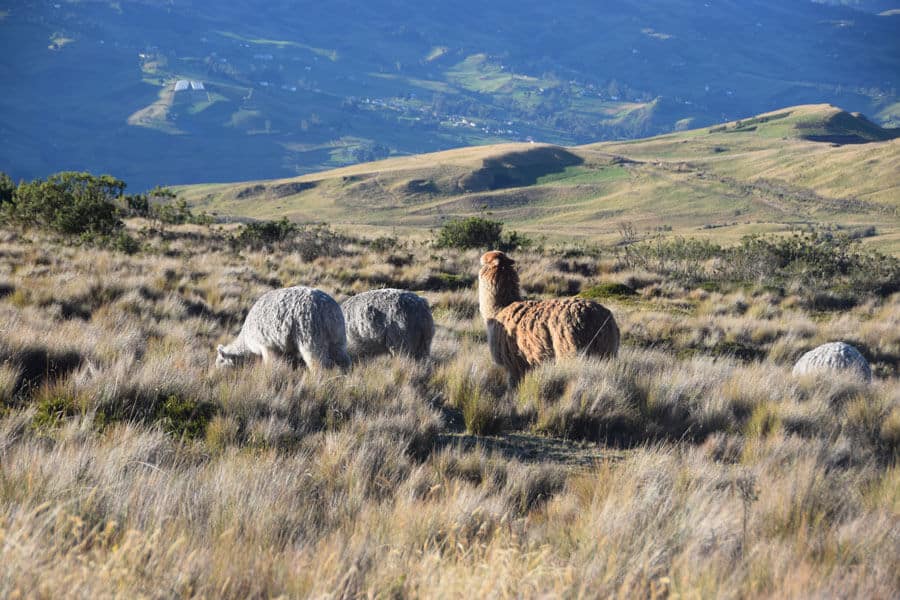
As mention above, the most frequent route of the Ecuador Inca trail starts in Achupallas and comes to an end in Ingapirca, but this is not written on stones. You could choose to hike the route the other way around, starting in Ingapirca and finishing it in Achupallas. The downside of this reverse route is that a significant chunk of the 40 kms road is up hill mountain paths at high altitude. A much more difficult trail!
You could also decide to hike a smaller section of the route. An available option is starting the hike in the Culebrillas Lagoon all the way to Ingapirca. This hike would take you about 5 to 6 hours to complete. If you choose to hike this smaller portion of the Inca trail you can find available transportation from the communities of Sisid or Caguanapamba. Is an hour ride from the communities to the Culebrillas Lagoon and it will only cost you around $15 per person.
A final note, there is also the option to do the trail by horseback riding in which case you won´t be hiking it.
Best time of the year to hike the Inca Trail in Ecuador
The Andes in Ecuador has two seasons: dry and wet, and it is possible to do the Inca Trail in either of them. However, each comes with their advantages and disadvantages.
Dry Season (April – October)
Advantages: The probabilities of rain, as the word dry suggests, are significantly lower and you can expect sunny, dry mornings and afternoons. However remember you are high up in the Andes and the weather is constantly chilly. Even in the sun it can be a little bit cold during the day.
Disadvantages: Although is called dry season it is the coldest season of the year. At nighttime temperatures drop considerably, so expect cold nights while camping. Don’t forget to bring an extra jacket and a pair of warm socks. July and June are considered the coldest months of the season, with temperatures dropping considerable after the sun drops so take that in mind while choosing your clothes.
Wet Season (November – March)
Advantages: Although wet season, as the word wet implies, means rainy days the temperatures are a little bit less cold than dry season. Therefore, temperatures at night are also less chilly.
Disadvantages: Hiking and camping in the rain for three days is not pleasant, so you may be increasing the chances of that. If there is notable rainfall, then hiking conditions become slippier and more difficult since some of the terrain can be really muddy and your boot or shoe can get stock in the mood. Some mornings can start with a cloudy sky carrying a dense humid mist, so be prepared to take out your poncho or rain coat.
Sometimes the weather can be a little bit crazy in Ecuador and during wet season you can have amazing sunny days. Don’t get discourage to hike the trail during your visit, even if it is during the wet season, maybe the weather gods are rooting for you and can deliver bright and warm days for your journey.
Achupallas: The staring point of the Inca Trail
This cute little parish is located at 3000 meters altitude in the Andes. It is a magical place surrounded by moist moors where rivers and creeks are born; they supply abundant water which bathes its fertile lands, allowing an unforgettable multi-colored landscape.
Probably you have never heard of Achupallas, before realizing Ecuador has a portion of the Inca Trail. This little town is located an hour away from the more popular town of Alausi. Alausi is exceptionally easy to reach from many different parts of Ecuador.
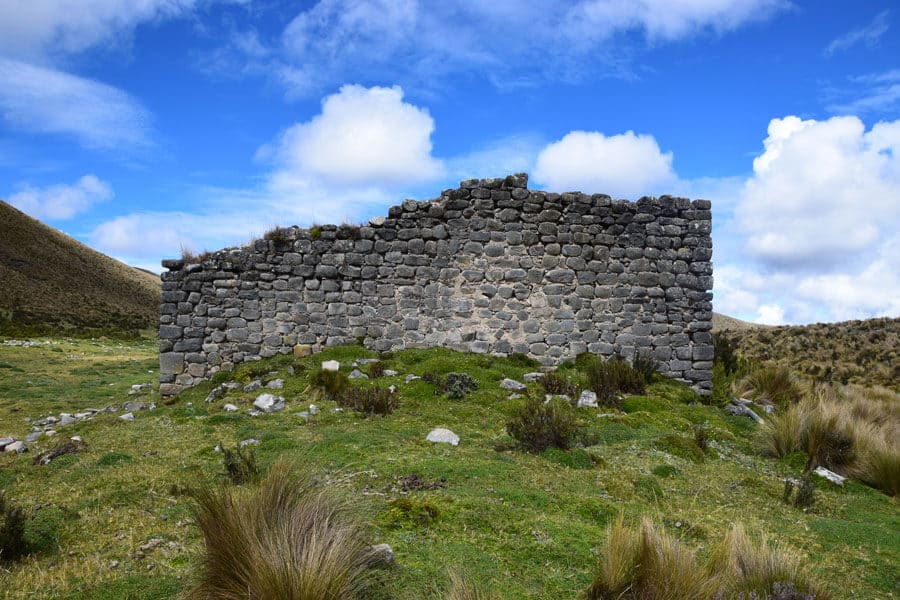
From Alausi you need to travel 15km south on E-35, Panamerican highway, to the little town of La Moya (when we say little we mean really little). Once you arrived to La Moya ask anybody to tell you which road is the one that goes up to Achupallas, since from here you will be going uphill over a gravel road; it is a half hour ride.
Once you arrive to Achupallas, go to your lodging accommodation and leave your bags. Then stroll around the old streets and have a sit in the cozy park while envisioning the adventure you are about to embrace the next day.
Make sure to have a good night sleep and you are ready for the trail!
Preparing for the Inca Trail Hike
Alright, you’ve committed to this hike, now there are some key milestones to achieve before you get near the trail. Preparing for the Inca Trail in Ecuador isn’t just an idea of dusting off some old hiking shoes and hoping for the best, but rather doing the necessary to make sure you have a pleasant and unforgettable journey in the Ecuadorian mountains. As a matter of fact, we must tell you, the Inca Trail isn’t just a walk in the park.
Although it is not by any extend the most physically challenging hike on the country, its inclinations and conditions provide enough of a challenge for any adventurer. You do not need to be a greatly experienced hiker, but getting a decent level of physical fitness before arriving in Ecuador will make everything easier and more enjoyable.
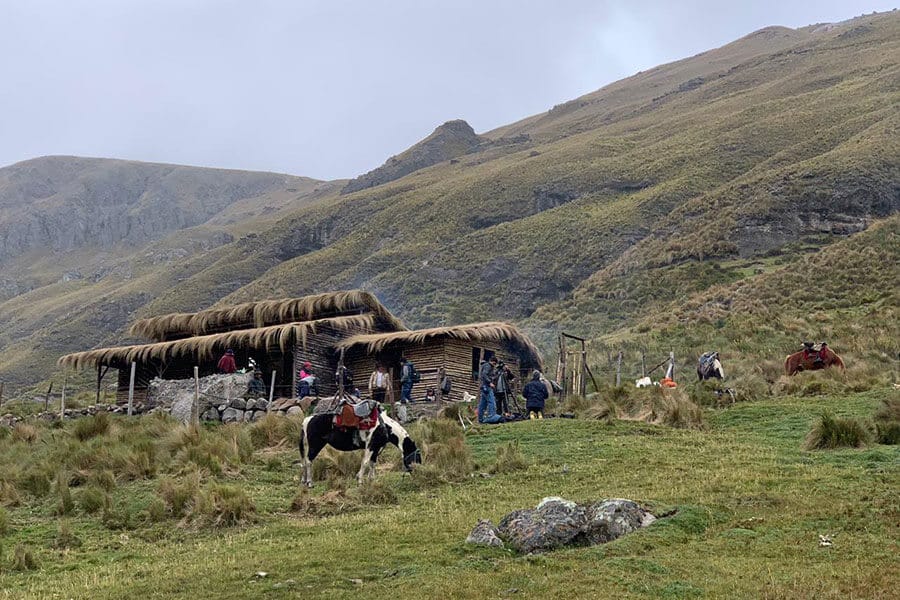
If you’re reading this and don’t feel that fit the description of someone who does a lot of exercise then don’t be too downhearted. Instead, view the Inca Trail as a challenge, and find motivation. Use it as a deadline to start walking and exercising more, maybe lose some weight, and make some positive changes that will benefit your life in the long run and not only for the purpose of this hike.
Keep reading below and you will find our recommendations and tips for what do you need to pack for the Ecuador Inca Trail.
Do I need a permit or a guide for hiking the Inca Trail
Unlike Perú, for hiking the Inca Trail in Ecuador it is not necessary to obtain a permit. Actually Ecuador does not issue permits for the trail. It is an open space, inside the Sangay National Park, where anyone can walk freely anytime they want.
Regarding the guide, we did the hike booking a local guide from the community of Achupallas. The guide included 2 mules that carried all the camping gear and food for the 3-day journey. The guide also brought a horse in case somebody gets sick or injure, that way this person could ride the horse and won’t suffer, that is a well prepared guide!
We strongly recommend booking a guide with mules otherwise you will have to carry all your stuff with you, around 12 to 16 kilos backpack. Believe us when we tell you that it can be a painful experience carrying all that weight on your back, unless you are a very fit professional hiker.
Biking the Inca Trail Hike in Ecuador
Maybe you are wandering if you have to book the Ecuador Inca Trail in advance?
Well, the answer is yes!
In previous posts we have established that the Ecuador Inca Trail is a well hidden treasure that has gained more popularity in the last few years, for that reason the trail is never packed with tourist and the towns around it have open spaces for on the spot reservation. BUT, since there not many visitors, the locals are not always ready to provide a service. Guides need to be reached in advance in order to be ready with mules and horses, camping equipment, and more.
Reading this and hoping for a last minute spot? It’s is certainly possible.
What can sometimes be a problem is trying to communicate with guides or lodging accommodations since cell-phone reception is limited in neighboring towns. You might need to dial a few times before being able to speak with the person of interest in the other side of the line. Maybe only for this reason, our suggestion is to make a reservation at least 48 hours in advance.
Was this list a lot of information to process? Ok, let’s catch a break!
We are absolutely delighted you have decided to hike the Ecuador Inca trail and hope all the information above described has come in handy. There are others details we need to provide you for this journey but we also know that a larger blog can sometimes be harsh to follow.
If you are still interested in grasping more specific information and want to continue reading please check out the next post INCA TRAIL TREKKING IN ECUADOR: THE QHAPAQ ÑAN PART 2 where we talk about the following topics: What is exactly the Qhapaq Ñan?, difficulty of the trail, costs, what to pack for the journey, and some other interesting tips.
See you in the next post!
